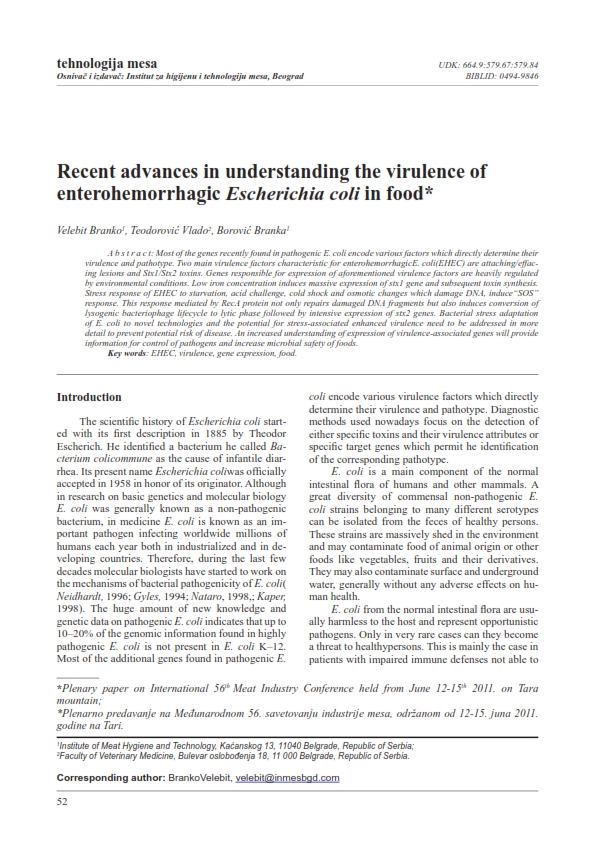Recent advances in understanding the virulence of enterohemorrhagic Escherichia coli in food
Abstract
Most of the genes recently found in pathogenic E. coli encode various factors which directly determine their virulence and pathotype. Two main virulence factors characteristic for enterohemorrhagicE. coli(EHEC) are attaching/effacing lesions and Stx1/Stx2 toxins. Genes responsible for expression of aforementioned virulence factors are heavily regulated by environmental conditions. Low iron concentration induces massive expression of stx1 gene and subsequent toxin synthesis. Stress response of EHEC to starvation, acid challenge, cold shock and osmotic changes which damage DNA, induce“SOS”
response. This response mediated by RecA protein not only repairs damaged DNA fragments but also induces conversion of lysogenic bacteriophage lifecycle to lytic phase followed by intensive expression of stx2 genes. Bacterial stress adaptation of E. coli to novel technologies and the potential for stressassociated enhanced virulence need to be addressed in more detail to prevent potential risk of disease. An increased understanding of expression of virulenceassociated genes will provide information for control of pathogens and increase microbial safety of foods.





